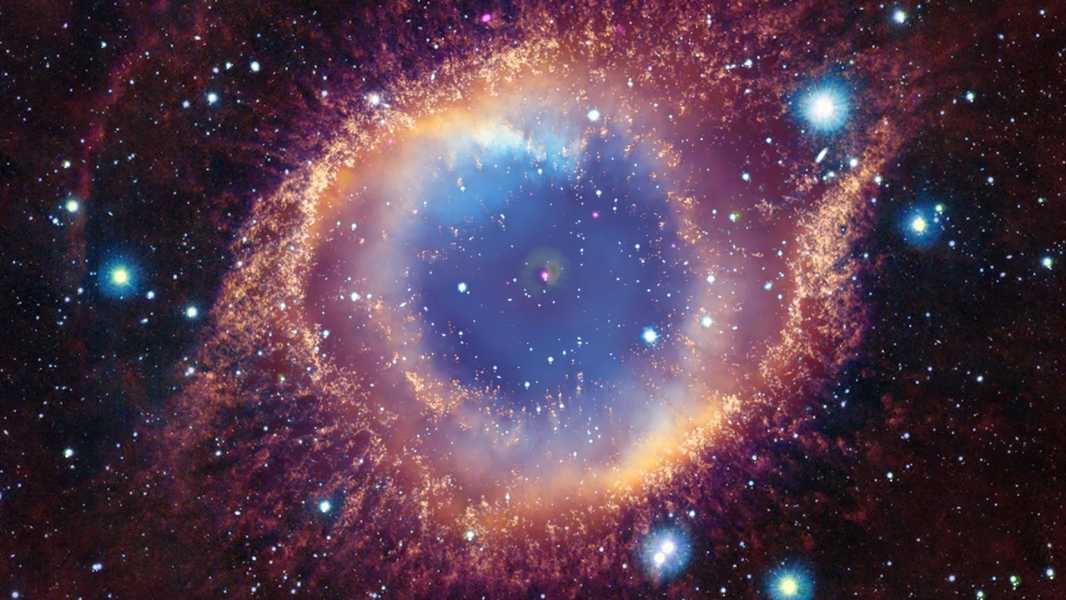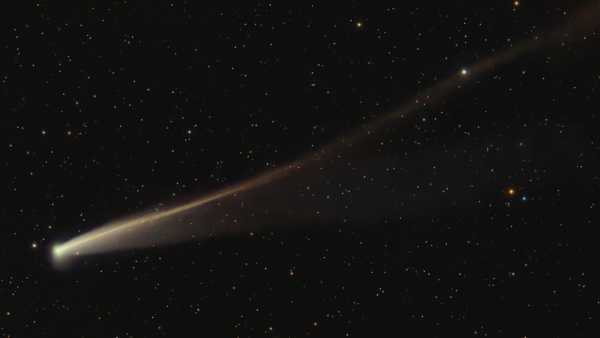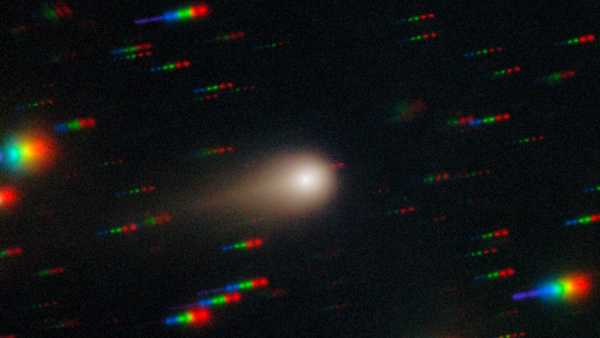
The Helix Nebula, also known as Caldwell 63, is located 650 million light-years from Earth. (Image credit: NASA/CXC/SAO/Univ Mexico/S. Estrada-Dorado et al.; Ultraviolet: NASA/JPL; Optical: NASA/ESA/STScI (M. Meixner)/NRAO (Rector TA); Infrared: ESO/VISTA/J. Emerson; Imaging: NASA/CXC/SAO/K. Arcand)
A new X-ray image of the spectacular Helix Nebula has revealed a potential culprit in the planet's demise: a white dwarf that may be the source of the nebula's unusual emissions.
The Helix Nebula, also called Caldwell 63, is located 650 million light-years from Earth, according to NASA. It is the remains of a dying star that is gradually shedding its outer layers of gas into space. The radiation from the star causes the gas to glow, forming a huge ring that extends about 3 light-years in diameter, according to NASA observations.
Now, a new look at the nebula combines X-rays from NASA's Chandra X-ray Observatory, visible light from the Hubble Space Telescope, infrared light from the European Southern Observatory's Visible-Infrared Survey Telescope, and ultraviolet light from NASA's Galaxy Evolution Explorer space telescope.
This wide-spectrum image reveals the remains of a dying white dwarf star responsible for creating the nebula, and suggests that the star may have engulfed a planet that wandered too close to its dying star. The white dwarf's gravitational forces appear to have torn the nearby planet apart, then pulled the remaining fragments onto the white dwarf's surface, causing powerful X-ray flares.
Our own sun will also end its existence as a white dwarf, the final stage for intermediate-mass stars that run out of fuel. White dwarfs gradually dim and cool until they disappear completely. In the Helix Nebula, the star ejects hot gas into space, and that gas cools and falls back toward the star. Swirls of hot gas and older, cooling gas collide, creating complex patterns that resemble comets.
In December 2024, a research team led by Sandino Estrada-Dorado, an astrophysicist at the National Autonomous University of Mexico, reported in the journal Monthly Notices of the Royal Astronomical Society that the mysterious X-ray emissions from the nebula were likely the result of material falling from a “substellar donor companion” onto the dying star. Substellar objects do not undergo hydrogen fusion as stars do. They include brown dwarfs (or “failed stars”), former stars, and planets.
If the white dwarf at the center did swallow the planet, it would have another thing in common with Earth's sun. By the time the sun reaches the white dwarf stage, it will have gone through a red giant phase, growing in size and swallowing our planet (and those closer to it). Luckily for us, this won't happen for at least 5 billion years, when the sun will start running out of fuel.

Stephanie PappasNavigation by
Sourse: www.livescience.com





